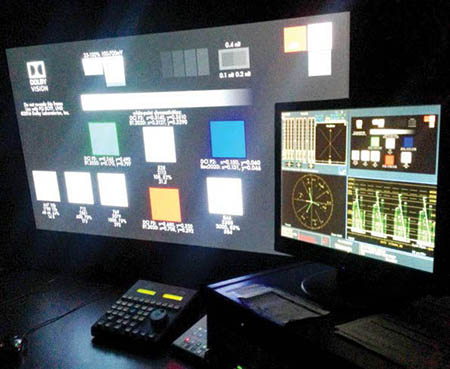My Eye Media Tackles HDR With Tektronix Monitors
BURBANK, CALIF.—The next exciting technology being developed within the video industry is HDR. Over the years, My Eye Media has seen technologies come and go, but based on the reactions from people who’ve seen it, HDR is one of the better advancements we’ve had. It’s better than 3D and even in standard high definition you can see a big difference in picture quality and detail as a result of the higher contrast you get with HDR.
ALL ABOUT THE NITS
For facilities like us that deal with mastering quality assurance, HDR is all about the nits. A nit is a unit of measurement of luminance, or the intensity of visible light, where one nit is equal to one candela per square meter. When our customers send over HDR content, one of our tasks is to precisely measure nit levels. We’re still at the very early stages of HDR and determining whether content meets the requirements of various standards and display devices is critically important.
Brightness, as measured in nits, is a big part of what makes HDR possible. To put things in perspective, standard Bluray and broadcast television content is mastered at just 100 nits. The open HDR 10 standard is mastered at around 1,000 nits while Dolby Vision targets 10,000 nits of brightness.
For us, measuring those nit levels accurately has been no easy task and we’ve struggled to find the right tools. One early solution was to use a photometer to measure the peak lumens coming from a display at the brightest locations, such as a reflection off a car windshield. There are problems with this approach though; it’s not real-time and the monitors themselves can be widely inconsistent.

The WVR8200 waveform monitors received HDR graticules in August.SCOPE HDR UPGRADE
Among the most important tools in our quality-assurance tool arsenal are the Tektronix WVR8200 waveform monitors, or scopes, as we often call them. Tektronix scopes help us establish a reputation as the leader in quality control, technical analysis and testing of all formats of digital motion picture content.
One of the more important aspects of Tektronix waveform monitors for us is field upgradeability. Our reputation is built on our ongoing ability to analyze and process content in the most cutting edge formats. Given the growing volumes of HDR content, as well as requests to verify the HDR readiness of Ultra HD and HDR displays, we were excited when Tektronix announced a set of HDR graticules (Hybrid Log Gamma or SMPTE ST 2084 PQ curves) for its WVR8000 series of waveform monitors and rasterizers in August.
Now that we’re up and running with the HDR upgrade on our four scopes, we can safely say that we’re ahead of the curve. We’re no longer at the mercy of display manufacturer ratings for nit levels. Our technicians use the tools to quickly evaluate the white levels between scenes while monitoring specular highlight details. Our main emphasis with HDR to date has been validating nit-levels, but the scopes offer more functions that are good to have, such as the ability to properly set up camera exposures for HDR using test charts.
Based on the momentum we’re seeing, HDR is here to stay. With tools like the Tektronix WVR8200 on hand, My Eye Media is on point for making sure our customers’ HDR content looks its best.
Ken Kiers leads the development of new digital workflows supporting quality assurance, quality control and testing of all formats of digital motion picture content. He can be contacted atkkiers@myeyemedia.com.
For more information, please visitwww.tek.comor call 800-833-9200.
Get the TV Tech Newsletter
The professional video industry's #1 source for news, trends and product and tech information. Sign up below.
